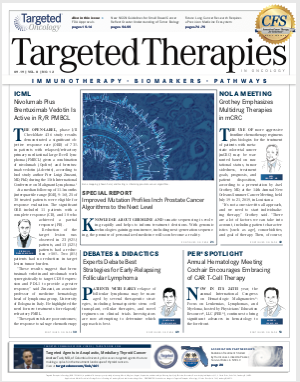Faced With BCG Shortages, Oncologists Move to Rationing of Care
Even as supplies of bacillus Calmette-Guérin, a standard of care for many patients with non–muscle invasive bladder cancer, continue to dwindle, oncologists have undertaken some desperate measures to continue the care they have been providing to their patients.
Arjun V. Balar, MD

Arjun V. Balar, MD
Even as supplies of bacillus Calmette-Guérin (BCG), a standard of care for many patients with nonmuscle invasive bladder cancer, continue to dwindle, oncologists have undertaken some desperate measures to continue the care they have been providing to their patients. For patients in the high-risk group, the traditional regimen is an induction course of intravesical BCG administered once weekly for 6 weeks, followed by maintenance therapy for 1 to 3 years comprising 3 cycles of instillations once per week in months 3, 6, 12, 18, 24, 30, and 36 after induction.1
One-third dosing is a common practice and has not been shown to com- promise efficacy, which is advantageous because instillations occur in trip- licate, also making it an effective strategy for maintaining supply.
Several other options have been suggested, but none can be implemented quickly. In the United States, the only strain of the bacteria accepted for production is the TICE strain, which is manufactured by Merck. In response to the shortage, Merck has increased production of TICE BCG by more than 100% to enable production at full capacity. Even with the increase, though, with only 1 supplier, the company finds itself bearing the brunt of world-wide demand.
Unfortunately, the production time to create BCG from start to finish takes about 3 months, with 2 months of horticulture in the very beginning: The bacterium grows on a specific variety of potato and then it’s harvested and processed in giant vats for the final month. There is opportunity for contam- ination at any point during production.
Other manufacturers don’t have the incentive to become BCG producers. At $100 to $200 a dose, there is not much financial motivation for competi- tion, even though the patent for BCG expired years ago.
Another option is the use of other strains of BCG. There is an ongoing ran- domized trial of TICE BCG versus Tokyo Strain lead by SWOG that could pro- vide sufficient evidence for the FDA to approve its use in the United States (NCT03091660).2The FDA could consider launching comparative studies to determine efficacy of alternate sources, enroll patients, and review the data, but patient accrual and analysis would take too long.
Adding to the complexity of the BCG shortage is that Merck is also the manufacturer of the immune checkpoint inhibitor pembrolizumab (Keytruda), which along with several other checkpoint inhibitors such as nivolumab (Opdivo), durvalumab (Imfinzi), and atezolizumab (Tecentriq), are being evaluated in the BCG-unresponsive setting. The plot thickens.
For now, clinicians who care for their patients who require BCG have few options. Relief is on the way, but how long it will take means that patients will go without necessary care or, at the very least, suboptimal care.
References
- Wroclawski ML, Schutz FA, Cha JD, Soares J. Alternative therapies to Bacillus Calmette-Guérin shortage for nonmuscle inva- sive bladder cancer in Brazil and other underdeveloped countries: management considerations.J Global Oncology. 2019;5:1-9. doi: 10.1200/JGO.19.00112.
- Different Strains of BCG With or Without Vaccine in High Grade Non-Muscle Invasive Bladder Cancer. bit.ly/2kwGEGW. Last updated August 8, 2019. Accessed August 29, 2019.

Survivorship Care Promotes Evidence-Based Approaches for Quality of Life and Beyond
March 21st 2025Frank J. Penedo, PhD, explains the challenges of survivorship care for patients with cancer and how he implements programs to support patients’ emotional, physical, and practical needs.
Read More